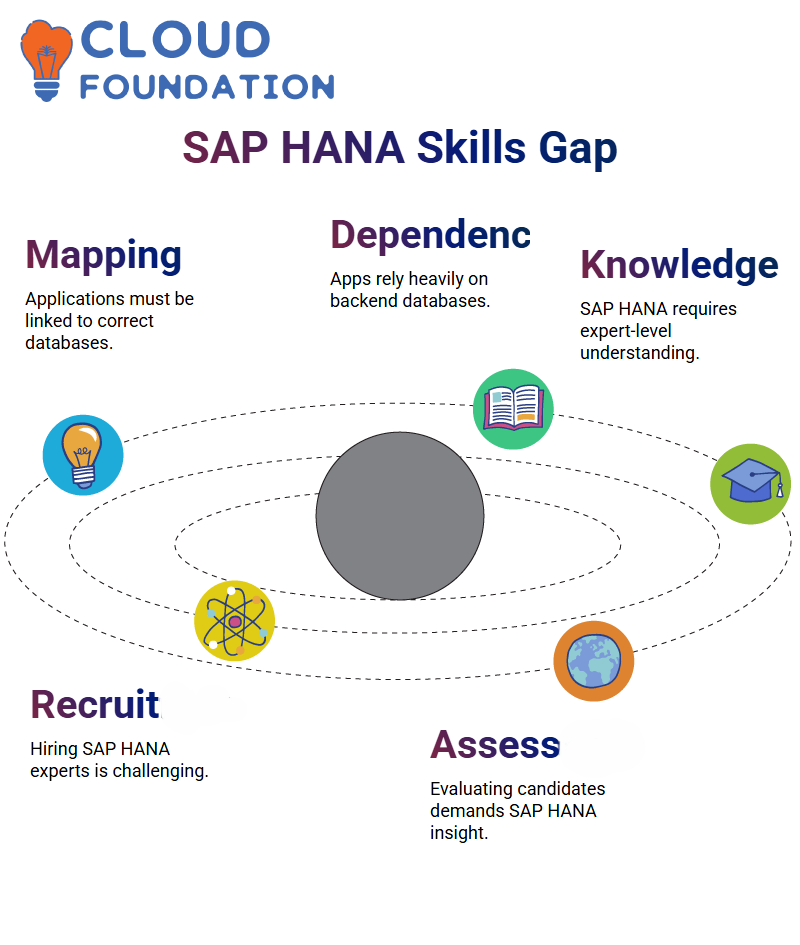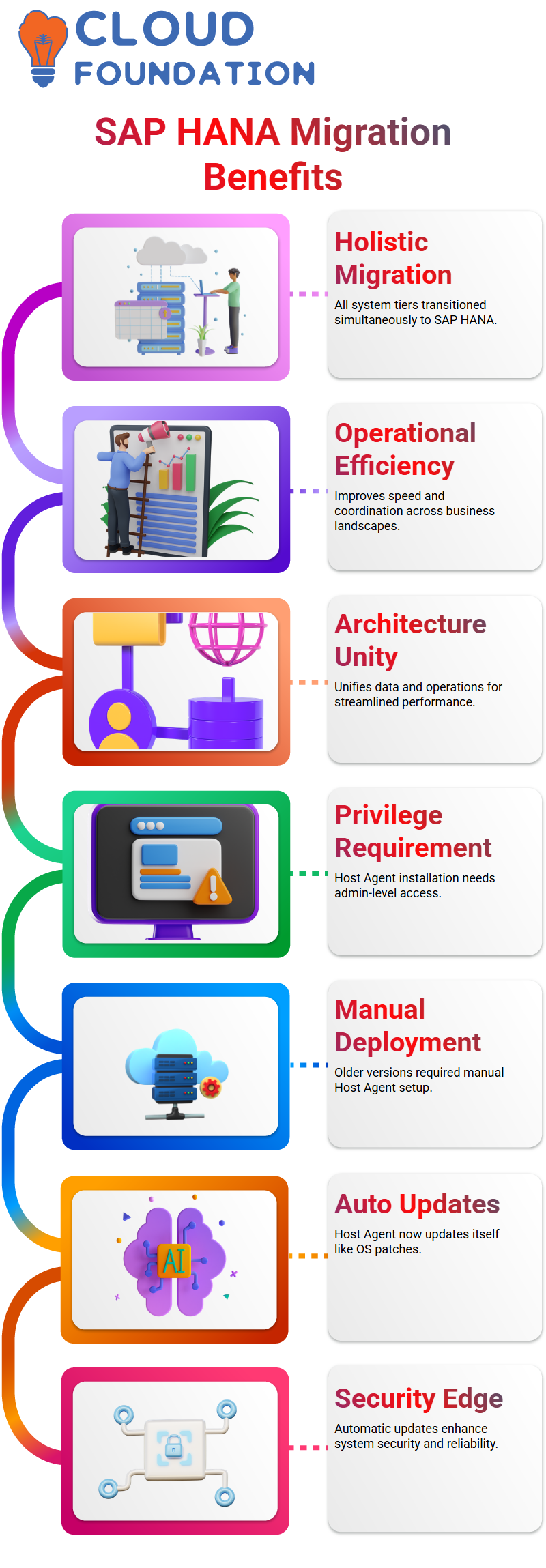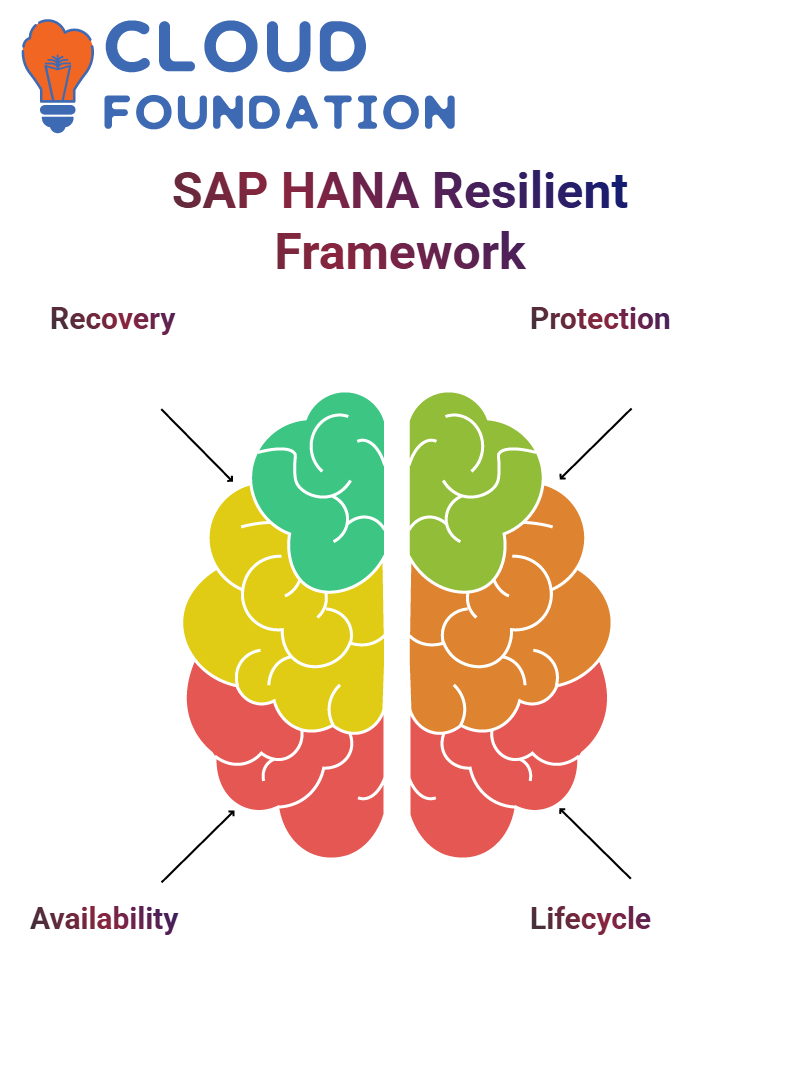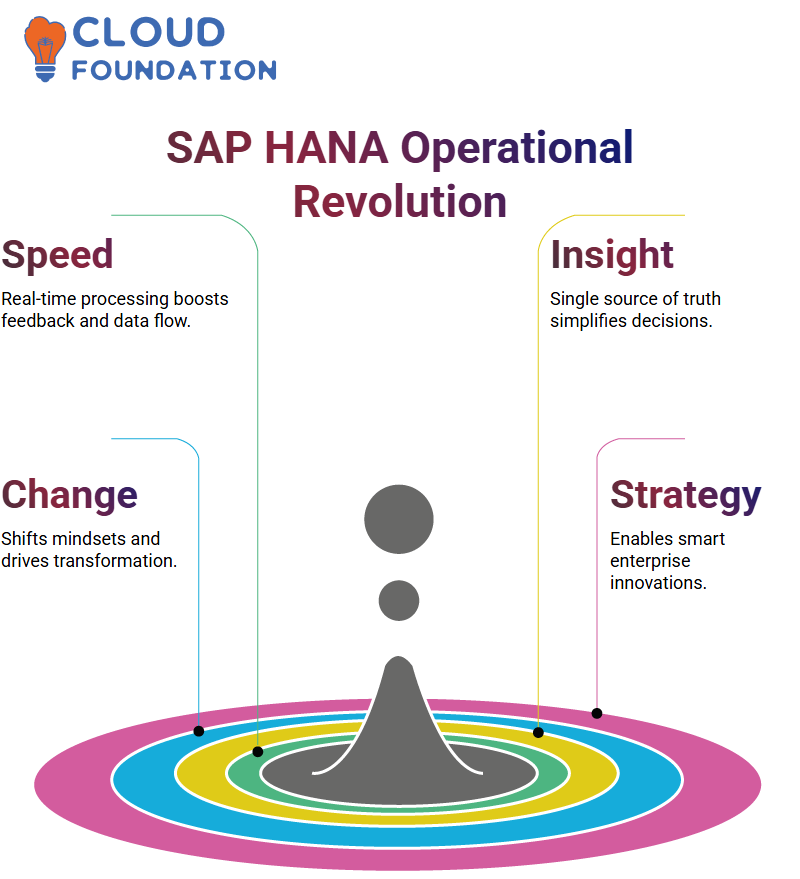SAP HANA Training Guide
Why SAP HANA?
SAP saw an opportunity. Why let another vendor take such a sizable share when the product itself belonged to them? In 2011, SAP developed its database, SAP HANA. This move wasn’t simply strategic — it revolutionised computing.

The goal of SAP HANA was to stop revenue leakage and create a single platform that can handle both applications and data management under one umbrella.
How SAP HANA Changed the Game
SAP became immensely popular during the 80s and 90s due to modules such as SD, MM and FICO; yet many forget that SAP applications also required external databases – Oracle SQL Server were a popular choice at that time – to function.
SAP was not comfortable ceding control or revenue to third-party databases, so in 2011, they introduced SAP HANA as an attempt to consolidate all their databases under one umbrella, creating its data brain.
Utilising SAP HANA allowed them to stop managing licenses across database vendors, and run applications more smoothly – it has been optimised from its core.
The Power Behind SAP HANA-Driven Business Solutions
One particularly notable aspect was how three key products — BW, Business Suite, and Simple Finance gained strength from SAP HANA.
Each successfully addressed major obstacles on their own before SAP HANA came into play; then everything fell into place.
SAP HANA is like getting a smartphone that does more than calculate and light the way; it brings together analytics, finance and core business functions in one streamlined solution, along with licensing and hardware savings.
Compatibility Edge of SAP HANA
SAP HANA is more than a striking new platform; it was specifically designed to be compatible with almost all SAP applications and modules, eliminating the havoc caused by version mismatches between database versions and SAP applications.
SAP HANA makes database headaches disappear; updates come more smoothly, performance ramps up faster, and best of all, its user experience across SAP tools feels seamless and powerful.
For organisations seeking relief from database lock-in issues, SAP HANA offers an empowering alternative with promising prospects.
SAP HANA Application and Database Discovery
We needed to identify all the applications used within our organisation and map them against their respective databases.
For SAP HANA users specifically, this mapping exercise becomes crucial; every application, from SD or BW to other modules, connects to its respective backend database in some capacity and therefore cannot function without it as its foundational structure.

SAP HANA isn’t the only database available; Oracle SQL, Microsoft SQL Server, or even Sybase may all play a crucial role. Still, understanding which applications depend on SAP HANA becomes even more vital.
Learning Curve of SAP HANA
Implementing SAP HANA requires expert knowledge. To assess someone for this position, a basic grasp of SAP HANA myself.
Finding experienced SAP HANA professionals can be challenging; it is not simply about hiring anyone, but rather about discovering someone with in-depth and comprehensive knowledge of SAP HANA’s intricacies and demands.
Recruitment becomes a bottleneck; without SAP HANA experience, we don’t know the right questions to ask, and as a result, finding suitable employees becomes almost impossible.
SAP HANA Landscape Migration
The development to quality assurance and production, transitioned to SAP HANA simultaneously.
Not just technically possible; Accenture made this possible, but allowed us to navigate it as the journey unfolded.
As someone from the petrochemical sector, SAP HANA is revolutionising the management of data and operations.

Landscapes that were once disjointed and slow are now running efficiently thanks to SAP HANA’s unification architecture.
SAP HANA Host Agent
SAP HANA Host Agent requires administrative or root privileges for installation. This speaks volumes about the level of trust SAP requires from server operations.
Older setups required manual deployment of the SAP HANA Host Agent; any incident of missing the host agent led to alert tickets and urgent intervention.
With its recent releases, that is no longer an issue — SAP HANA now auto-updates itself, just like operating system patches on laptop computers.
Automatic updates give the SAP HANA Host Agent an edge, keeping server environments fresh and secure without the need for manual checks for outdated software versions – one of SAP HANA’s many hidden benefits.
SAP HANA Host Agent in Real Time
The SAP HANA Host Agent, which led me to appreciate its significance in any SAP HANA deployment.
Being active in an intensive tech learning environment has exposed me to real-world scenarios where Host Agent plays an essential part.
During initial exploration of SAP portal documentation, the SAP HANA Host Agent immediately caught attention.
More than simply an installation program, this component provides system lifecycle management functions within SAP HANA.
SAP HANA Host Agent acts much like the security watchman of any large building: constantly keeping an eye on operating system activity, database access activity and provisioning controls to detect threats to SAP HANA systems or improper deployment if left without this protection.
Real-Life SAP HANA Host Agent
Imagine living in a gated community where a security team are on duty 24/7 to inspect every visitor before admitting them; SAP HANA Host Agent works the same way for your server.
The SAP HANA Host Agent resides on each server, acting as an invincible security guard: diagnosing deployments, examining intrusion attempts, and flagging any indications that something seems amiss in real-time, making me believe its value is irrefutable.
The SAP HANA Host Agent has come through for me on multiple occasions. Flagging outdated third-party agents trying to run unapproved scripts was often lifesaving.
SAP HANA immediately flagged those agents as potential risks, thereby saving our enterprise from further data integrity issues.
SAP HANA Disaster Recovery and High Availability Insights
The disaster recovery (DR) and high availability (HA). Comparing their definitions was like unlocking some code for system resiliency.
SAP HANA prioritises high availability as an essential feature to eliminate single points of failure and ensure operational status is restored following any outages.
Disaster recovery serves to restore SAP HANA to operational status after any interruption occurs.
 SAP HANA meticulously builds its High Availability (HA) and Disaster Recovery (DR) strategies, from definition stages through deployment procedures, with the primary goal of protecting infrastructure while minimising manual overhead costs.
SAP HANA meticulously builds its High Availability (HA) and Disaster Recovery (DR) strategies, from definition stages through deployment procedures, with the primary goal of protecting infrastructure while minimising manual overhead costs.
Product Lifecycle Management of SAP HANA
Let me guide you through how SAP HANA integrates with Product Lifecycle Management (PLM).
It’s fascinating how each step from idea creation through customer delivery is precisely orchestrated using SAP HANA. PLM is not simply a buzzword; it drives modern industry innovation with power from SAP HANA.
SAP HANA can assist industries to break free from fragmented systems. From telecom innovations like Jio to other market players, SAP HANA’s 360-degree support helps streamline product evolution while offering continuous support to all.
Evolving SAP HANA Products: BW on HANA and BW for HANA
To clarify things there’s two forms of SAP HANA BW solutions, both belonging to the family of BW solutions but serving distinct functions.
BW on SAP HANA concentrates on supporting existing BW functionality on its database while BW for SAP HANA is purpose built specifically for SAP HANA with optimized code from scratch.

Customers in both cases experienced unprecedented speed and flexibility, with many of them trying SAP HANA for advanced analytics for the first time, and achieving previously inconceivable performance capabilities.
SAP HANA Powers Business Warehouse
SAP HANA-powered SAP Business Warehouse brought analytics to life. Let me say — it was a game-changer in analytics; companies needed to report on an ever-increasing volume of information, and traditional tools could no longer keep pace.
Once SAP HANA was optimised to work seamlessly with Business Warehouse (BW), performance improved drastically for customers experiencing speed or reporting limitations.
SAP HANA provided them with a practical, robust solution they could rely on when crunching numbers or creating daily dashboards – fast, seamless performance every time.
SAP HANA Powers the SAP Business Suite
The integration of SAP HANA into the SAP Business Suite represented a significant leap forward for SAP.
Business Suite like Microsoft Office: it comprises key business applications, including ERP, CRM and SRM that work together seamlessly.
By embedding HANA within this ecosystem of applications, SAP effectively turbocharged all aspects of business operations.
Regardless of whether your enterprise managed finances with ERP or CRM solutions, engaged customers through CRM, or oversaw supply chains with SRM or logistics in SRM, SAP HANA brought real-time insights and predictive analytics directly into decision-making processes.
Understanding ERP, CRM, and SRM in the Context of SAP HANA
ERP (Enterprise Resource Planning) has long been at the core of business process automation.
By running ERP on SAP HANA, not only can speed be gained, but flexibility and scalability also become additional advantages that transform routine daily operations into responsive ones.
CRM–Customer Relationship Management–and SRM (Supplier Relationship Management) both benefit greatly when combined with SAP HANA.
Businesses gained insights that went beyond reactive responses; instead, they provided for proactive approaches that helped nurture both customer loyalty and supplier reliability.
Exploring SAP HANA’s Role in Real-Time Operations
SAP HANA’s real-time processing capabilities, including server monitoring and analytics management, as well as quick feedback loops and dynamic data flow.

To log into the SAP HANA server for the first time, it felt like entering another realm: a phenomenal software capable of simultaneously handling various tasks while providing a single source of truth, not simply software, but rather an IT revolution.
SAP HANA’s Role in Technical Transformation
SAP HANA transformed not just databases but the entire enterprise experience. You will become acquainted with technical terms and innovation strategies that made SAP HANA such a game-changer.
Our mindsets have shifted; now is the time to recognise how SAP HANA continues to advance its legacy within the industry and beyond.
SAP HANA: Transforming Business Models and Data Flow
Back then, businesses relied on separate products. SAP HANA enables an all-in-one model for business use; Witnessed businesses transform themselves thanks to SAP HANA.
It no longer requires multiple data sources; instead, it serves as a single, central truth.

SAP HANA’s impressive transformation of data models is inspiring: traditional databases have taken a backseat; SAP HANA now leads this process with speed and clarity, offering smooth user experiences through clean interfaces that improve productivity and user satisfaction.
How SAP HANA Finance with Simple Finance
Experience with traditional finance software can be painful. With SAP HANA’s transformation of finance operations, we shifted away from rigid structures like FACI and toward its more streamlined interface, Simple Finance.
SAP HANA changed not just lives for the better; it transformed them. Finance teams can now manage accountability, equipment maintenance, and social security seamlessly on SAP HANA, eliminating redundant steps and creating an intelligent solution.
SAP HANA Reimagining Usability with Fiori
Fiori was an eye-opener during journey with SAP HANA.Not only was its interface usable and navigable from mobile phones, but its layout was also friendly, and a logical workflow was evident in every part of its functionality.
It provided me with access to data without requiring me to memorise transaction codes.
Fiori layer made SAP HANA seem less formidable by offering an app-like experience; just curiosity and time spent clicking around are enough. While not yet replacing classic GUIs.
SAP HANA for Real-World
SAP HANA, more deeply, we discovered its depth: thousands of decodes. What distinguishes HANA is its flexibility: through Fiori standard apps and customised ones, it adapts the experience for different projects and meets project-related demands more precisely.
A standard Fiori app doesn’t fulfill needs, so developers step in with custom solutions.
This adaptability gives SAP HANA a less rigid feel and makes it a more adaptable tool that we use for ourselves, increasingly at home, every time we engage. Its rapid expansion keeps confidence high.

Vinitha Indhukuri
Author



